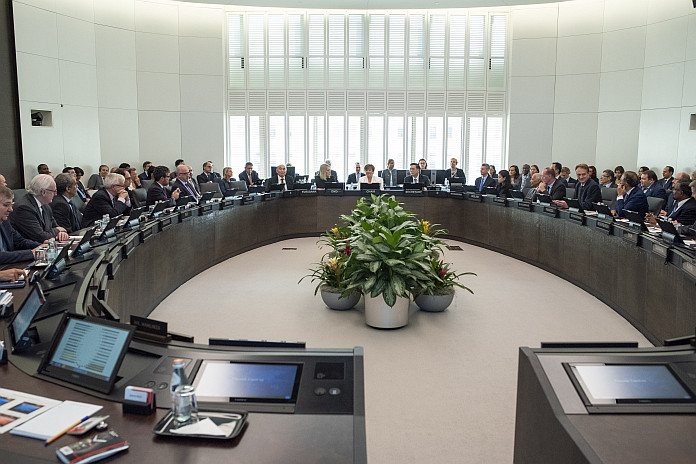WASHINGTON, USA – On July 29, 2021, the executive board of the International Monetary Fund (IMF) concluded the Article IV consultation discussions with the Kingdom of the Netherlands – Curaçao and Sint Maarten and endorsed the staff appraisal without a meeting on a lapse-of-time basis. These consultation discussions form part of the Article IV consultation with the Kingdom of the Netherlands.
The COVID-19 pandemic inflicted another major shock on the economies of Curaçao and Sint Maarten. It followed major hurricanes in Sint Maarten in 2017 and the spillovers of the Venezuelan crisis on Curaçao that caused a decline of the oil refining sector, one of Curaçao’s major economic pillars. The pandemic led to a collapse of tourism in both countries. Despite significant response measures swiftly designed by the authorities and financed by the Netherlands, real GDP is estimated to have fallen 20 percent in Curaçao and 24 percent in Sint Maarten in 2020 due to the high dependence on tourism.
A particularly severe outbreak of COVID-19 in Curaçao in March-April 2021 required a near-lockdown and brought tourism to a halt again. A combination of depressed fiscal revenue and higher spending needs due to COVID-19 response measures widened fiscal deficits in 2020, increasing government debt stocks to about 89 and 65 percent of GDP in Curaçao and Sint Maarten, respectively.
The economic recovery is likely to be protracted as tourism is expected to reach its pre-pandemic levels only in 2024. Zero real GDP growth is projected in Curaçao in 2021 due to the effects of the COVID-19 outbreak, followed by 6.5 percent growth in 2022 as tourism partially recovers. Unless the refinery resumes operations in a sustainable way, it could take a decade for real GDP to recover to its pre-pandemic (2019) level as the refinery-related sectors decline.
In Sint Maarten, real GDP growth is projected at 4 percent in 2021 and 15 percent in 2022 driven by the recovery of tourism and the implementation of post-hurricane projects including reconstruction of the airport. Real GDP is likely to recover to the pre-pandemic level in 2024. In both countries, inflation is likely to accelerate in 2021 due to higher fuel and other import prices. Elevated primary fiscal deficits in 2021 are likely to increase the government debt ratios to 103 and 82 percent of GDP in Curaçao and Sint Maarten, respectively, although the debt ratios would gradually decline in the medium term as fiscal deficits subside and the economies recover. The outlook is subject to elevated uncertainty and risks, including the risk of another COVID-19 outbreak and delays in securing the required liquidity support.
Executive board assessment
The comprehensive economic support measures, put in place with help from The Netherlands, cushioned the COVID-19 shock and saved livelihoods. They supported employment and helped avoid mass bankruptcies. However, the economic contraction was severe and the outlook is challenging and subject to elevated uncertainty and risks.
The near-term focus should be on safe reopening of the economies, providing support where necessary, and setting the stage for inclusive recovery and medium-term sustainability. Accelerating vaccination campaigns, particularly in Sint Maarten, would support recovery of the hospitality sector. It would be important to provide adequate resources to critical areas such as the health sector, tax administration, AML/CFT, and data and information frameworks. Agreements with The Netherlands (landspakketten) present a window of opportunity to implement structural reforms to support a recovery and ensure medium-term sustainability.
Strong implementation of fiscal reforms and a sustainable economic recovery are needed to achieve medium-term debt sustainability. Both countries need to strengthen tax administration as a matter of urgency and implement tax policy reforms to widen the tax base. It is essential to strengthen public financial management through better planning, stronger expenditure controls, better tracking of fiscal risks, and improved transparency. In the long term, both countries would benefit from moving towards a Fiscal Responsibility Framework including government debt as a long-term anchor. As the debt anchor of 40 percent of GDP recommended previously is unfeasible unless a part of liquidity support is converted into grants, the new target can be set when uncertainty subsides.
Monetary policy should aid the recovery while supporting the peg. The excess liquidity should be monitored closely and sterilized if the international reserves come under pressure. The CBCS is encouraged to remove capital flow measures introduced in March 2020 as soon as the recovery takes hold and if the international reserve cushion remains comfortable. Staff does not recommend approval of the exchange restriction as the conditions for approval are not met.
The authorities’ efforts to address financial sector vulnerabilities are welcome and need to be sustained to address the banking sector fragilities. Developing a comprehensive Financial Sector Reform Program was a significant step forward. Careful sequencing of measures and implementation would be key for addressing the vulnerabilities. Efforts to transition to risk-based supervision, strengthen supervisory enforcement, and upgrade the bank resolution framework should be frontloaded. The CBCS should develop a roadmap for addressing results of a planned asset quality review.
Finding new areas of growth, supported by strong across-the-board structural reforms, would help mitigate exposure to shocks and boost potential growth. The authorities could foster new areas of growth by improving the business environment and reducing the cost of doing business. Facilitating various permits – including through better transparency and eliminating red tape -would increase incentives for investment, including FDI. Phasing in more labor market flexibility while fine-tuning safety nets and addressing skills gaps would improve competitiveness and adaptability. Expanding green energy (such as solar and wind) or pursuing green projects could generate new investment.
Significant efforts are needed to improve planning, implementation capacity, and governance in the public sector, particularly in Sint Maarten. As gaps in data availability and quality hamper effective macroeconomic analysis and policymaking, it is essential to address the shortages of personnel and financial resources in this area.





